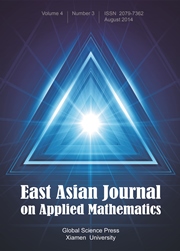No CrossRef data available.
Article contents
Linear Regression to Minimize the Total Error of the Numerical Differentiation
Published online by Cambridge University Press: 31 January 2018
Abstract
It is well known that numerical derivative contains two types of errors. One is truncation error and the other is rounding error. By evaluating variables with rounding error, together with step size and the unknown coefficient of the truncation error, the total error can be determined. We also know that the step size affects the truncation error very much, especially when the step size is large. On the other hand, rounding error will dominate numerical error when the step size is too small. Thus, to choose a suitable step size is an important task in computing the numerical differentiation. If we want to reach an accuracy result of the numerical difference, we had better estimate the best step size. We can use Taylor Expression to analyze the order of truncation error, which is usually expressed by the big O notation, that is, E(h) = Chk. Since the leading coefficient C contains the factor f(k)(ζ) for high order k and unknown ζ, the truncation error is often estimated by a roughly upper bound. If we try to estimate the high order difference f(k)(ζ), this term usually contains larger error. Hence, the uncertainty of ζ and the rounding errors hinder a possible accurate numerical derivative.
We will introduce the statistical process into the traditional numerical difference. The new method estimates truncation error and rounding error at the same time for a given step size. When we estimate these two types of error successfully, we can reach much better modified results. We also propose a genetic approach to reach a confident numerical derivative.
MSC classification
Information
- Type
- Research Article
- Information
- Copyright
- Copyright © Global-Science Press 2017

